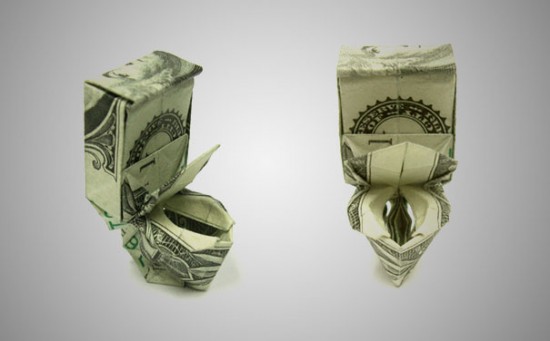

Perfect for adults or kids, and the ideal gift for someone who would like to try their hand at the traditional Japanese art of origami! The clear, colorful instructions in this book make it easy to create amazing paper models without any previous paper-folding experience. An Inflatable Bunny Balloon - the most challenging (and rewarding!) model in the book…a puff of air makes it 3D!.The Dart Glider - a classic paper airplane that's fun to fold, but even more fun to fly!.A Hibiscus Blossom - one of two "modular" designs in the book that use several folded sheets to form a blossom that looks complicated (but isn't!).A Mother Duck and Duckling -an adorable duck and duckling pair that requires only one sheet of paper!.A Picture Frame - a useful and inexpensive way to display your favorite family photos.Included are the following delightful projects: It is fully illustrated in color with simple and clear step-by-step instructions for each model.
#ORIGAMI EASY HOW TO#
This value-packed book shows you how to fold the 20 most popular origami models that everyone loves to make. New types of origami have been made because more people are making origami models.A complete introduction to origami paper folding for beginners at an unbeatable price!Įasy Origami for Beginners is the ideal beginner's introduction to the magic of origami. Some folders use rulers or other flat tools to make sharper creases in the models.

Tweezers and paper clips can be used to make very small folds. Traditional paperfolders believe that only the hands should be used when folding, but many modern folders use other tools when folding. Many paperfolders prefer to use a flat surface to fold models on, but others, like the Japanese, fold in the air. Copy paper, napkins, wallpaper, index cards, and even paper money can be used to make interesting and unique models. Many people like origami because there is almost always paper.
/high-angle-view-of-origami-on-colorful-papers-1004039558-a38cb3db67674a0ab747878412a14fa8.jpg)
Lang that is "a sandwich of aluminum foil and two pieces of tissue paper." In this method, two pieces of paper are pasted to each side of the aluminum foil.
/easy-origami-rose-instructions-2540933-381-5c34e5fb46e0fb000105d530.jpg)
Engel describes a process shown to him by Robert J. Many people like to make their own paper. There are also special papers, like textured, metallic, and patterned. Duo paper, or paper with different colors on each side, is used by paperfolders because it makes areas of different color on the finished model. Peter Engel, who is a well-known paperfolder, says "the best paper is thin and crisp and absolutely square." Pre-cut origami paper is sold in many colors, sizes, and patterns. Many different types of paper can be used for origami. His instructions on paperfolding are now used in all countries. In 1954, Japanese paperfolder Akira Yoshizawa created rules to explain how to fold origami models. Recently, people have become more interested in origami. Finally, in 1845, Kan no mado was written, and it was the first book of origami models. The earliest evidence of paperfolding in Europe is a picture of a boat in 1490. There were also independent paperfolding traditions in other countries, like Germany and Spain. For example, Shinto nobles celebrated weddings with sake in glasses decorated with origami butterflies, which gave good luck to the bride and groom. People often folded models and gave them to other people for good luck. Instead of making models that looked exactly like things, the first origami models only looked similar to things. It finally came to Japan in the 6th century. Paperfolding started in China in the 1st or 2nd century.


 0 kommentar(er)
0 kommentar(er)
